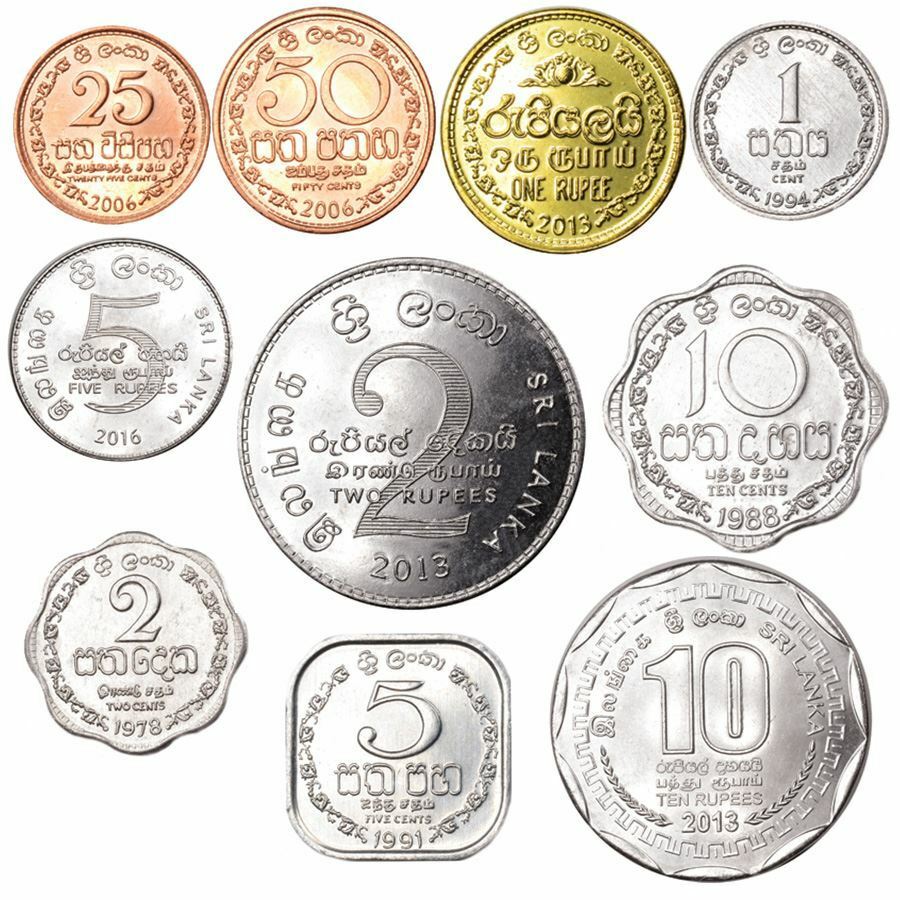This state was discovered by the Portuguese navigator Lawrence de Almeida in the 16th century, then it was called the island of Ceylon. From this period Sri Lanka was occupied by the Portuguese.
In the 17th century, the Portuguese colonies were replaced by the Dutch, but after a short time they were forced out of the island by the British. So in 1802 Ceylon became a possession of the British Empire.
Therefore, the history of the development of the monetary system of Sri Lanka is interesting and unique in its own way. The first coins of Sri Lanka appeared in use by the beginning of 1000 AD. e and were called rajaraya. These coins are of great historical value, as they are very rare.
At the time of colonization by Portugal and Holland, copper rupees, pise and stivers were in use. Under the rule of the British Empire, silver and bronze cents were introduced on the island, which have remained in use in Sri Lanka to this day. Also, during the English patronage, the Indian rupee was in circulation on the island.
Ancient, from the time of colonial rule, the coins of Sri Lanka are stored in the local history museum of the city of Galle.
In 1940-1944 began to massively replace coins, in connection with which, 1 cent was reduced in weight and thickness, nickel brass was replaced with cupronickel, in coins with a denomination of 2, 5, 25, 50 cents.
In 1957, commemorative coins of Sri Lanka came into use once, with a face value of 2 cents with the image of Elizabeth ll.
In 1948, the island gained partial independence from Britain and became known as the “Dominion of Ceylon”, and a new currency came into circulation – the Sri Lankan rupee, which consisted of 100 cents.
The island of Sri Lanka gained full autonomy only in 1972.
In 1963, new coins of Sri Lanka came into use with the state emblem, which is crowned with a crown with a cross on top. After gaining full independence, the cross on the crown was replaced by a Buddhist symbol.
However, in 1976, the Tamils seized power in Sri Lanka, and the state itself was renamed Tamil Eelam. This situation could not but affect the monetary system of the country.
Thus, small coins of Sri Lanka were withdrawn from use, only 5 and 10 rupees remained.
The situation changed after the island received a victory over the Tamils in 2009. In this connection, the world saw a new banknote in denomination of 1000 rupees.
Currency of Sri Lanka today
As mentioned above, the Sri Lankan rupee (LKR, code 144) has remained the national currency of the state to this day. Sri Lanka left change coins, these were coins from the times of colonial dependence on Britain – cents.
Today there are banknotes in circulation: 20; 50; 100; 200; 500; 1000; 2000; 5000 Sri Lankan rupees. The monetary unit of 10 rupees was taken out of use.
Banknotes of Sri Lanka have an interesting design and decoration, which makes them look like the currency of European countries.
On the obverse of the island’s paper money are images of commemorative architecture and infrastructure, namely: bridges, the Mahaweli Gan River, a waterfall, a power plant, a central bank building, a temple, a tunnel, and the Veheragala dam.
The reverse of the banknotes depicts scenes from the ordinary life of the country’s common people, namely a drummer and a dancer who performs different national dances on each of the banknotes.
Sri Lanka issues coins in denominations: 1; 2; 5; 10; 25; 50 cents and 1; 2; 5; 10 rupees.
Modern coins of Sri Lanka are distinguished by their original shape and pattern. The denominations of 2 and 10 cents have an eight-liter design, 5 cents have the shape of a square, 10 rupees have a ten-leaf design, all other denominations have the usual radial shape.
The obverse of the coins bears the name of the issuing bank, the denomination and year of issue, the reverse is the image of the national emblem of Sri Lanka.
Sri Lanka mints aluminum, nickel-plated steel, copper, bronze, and cupro-nickel alloy coins.
If you are also interested in the history of the monetary system of Sri Lanka, or if you just want to add new items to your numismatic collection, please contact the iCoins online store.
Coins of Sri Lanka, the prices for each client are acceptable and affordable.
“Coins of Sri Lanka” catalog contains a wide range of products, including commemorative coins of Sri Lanka, which can advantageously complement the most exclusive numismatic collection.
At the same time, Sri Lankan coins in the iCoins store are affordable and democratic.
Buy Sri Lanka coins immediately, the price of which is always pleasantly surprising.
Expand your collection with the best numismatic items today.
Happy shopping with iCoins!
Rupee (Tamil: ரூபாய்) is the currency of Sri Lanka, divided into 100 cents. The international code is LKR. The currency is printed by the National Bank of Sri Lanka, usually written as ₨ (sometimes the form SL₨ is used to avoid confusion).
Currency of Sri Lanka: exchange rate to the dollar
The exchange rate of the Sri Lankan rupee is changing slowly, but one thing is certain: against the dollar, the rupee has become cheaper over the years.
If you choose what currency to go to the island with – the dollar or the euro – it will definitely be more profitable to buy in dollars, since they are still cheaper than the euro against the ruble. Unlike Thailand, where it is more profitable to exchange large bills, this moment does not matter in Sri Lanka.




